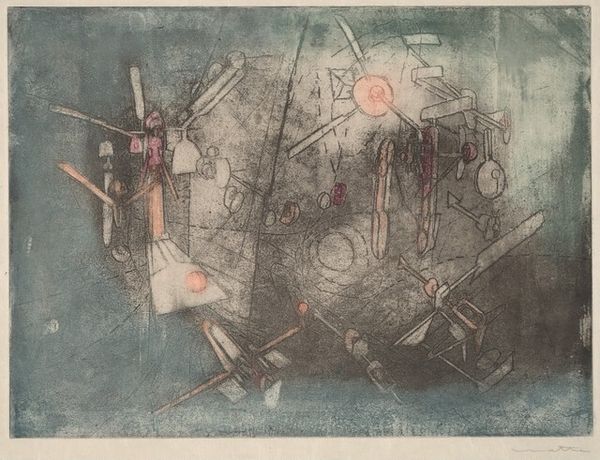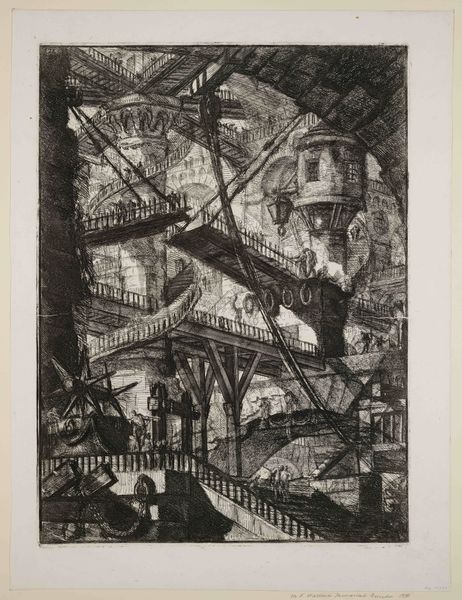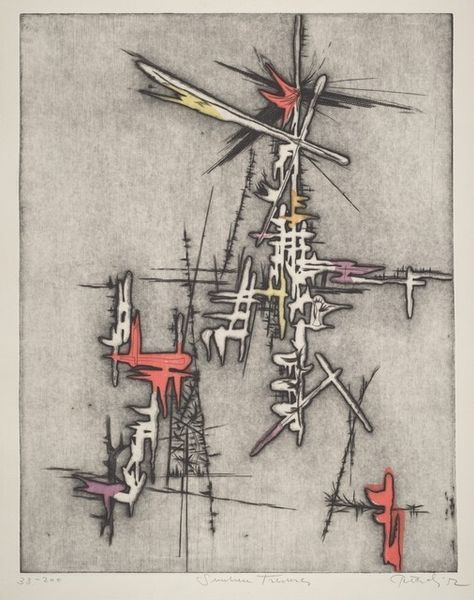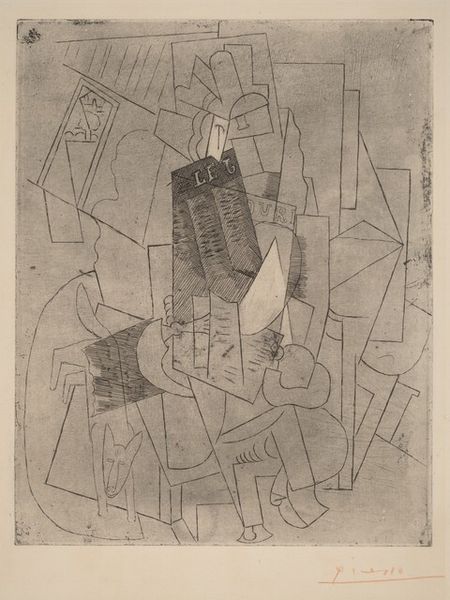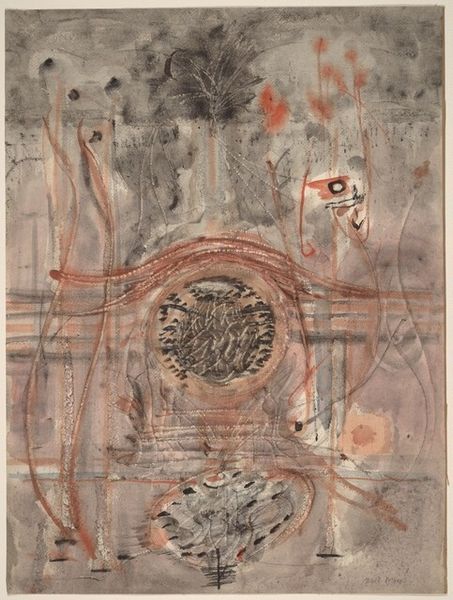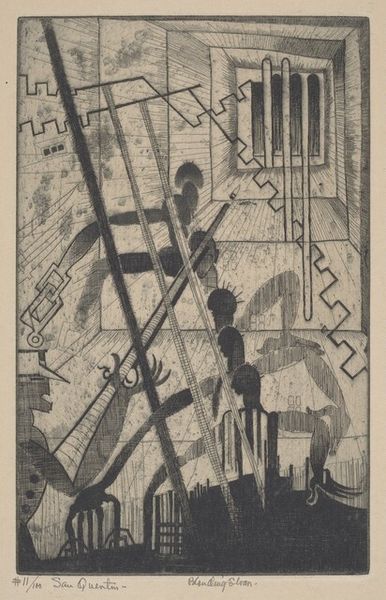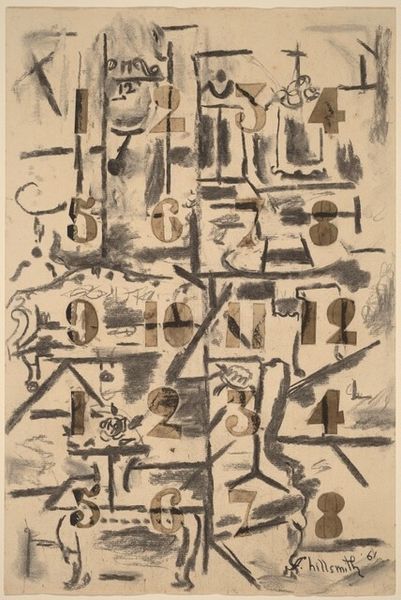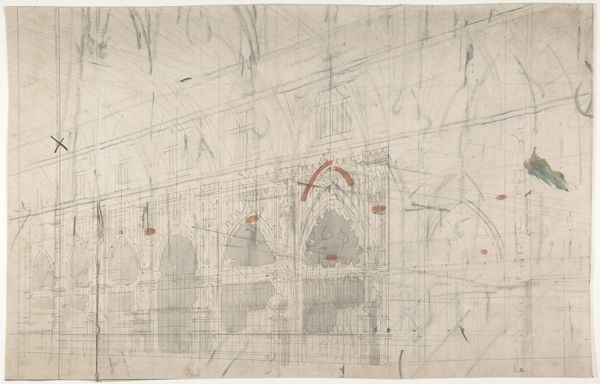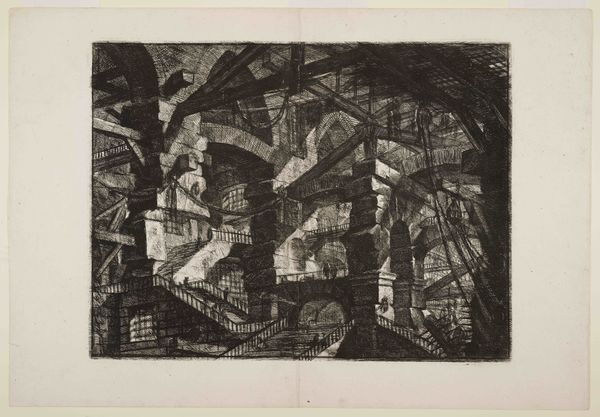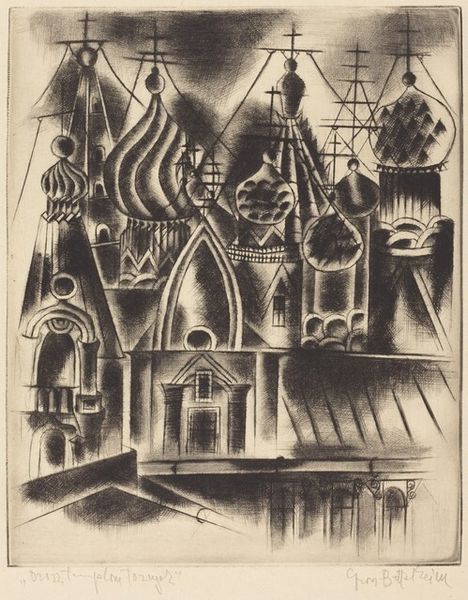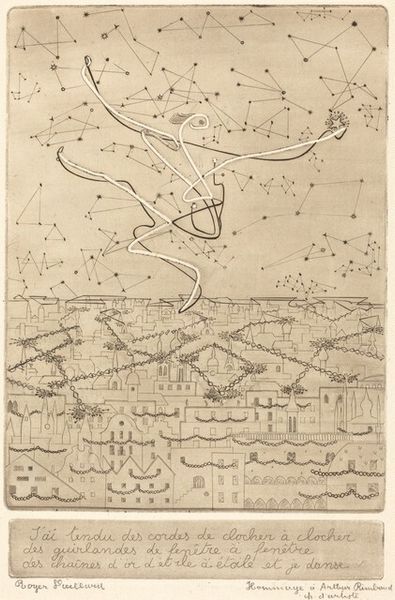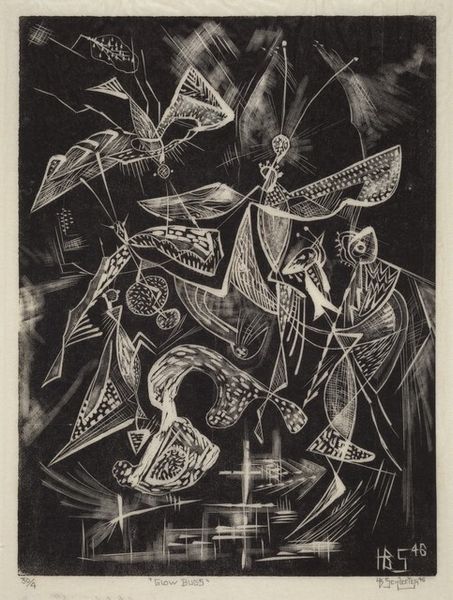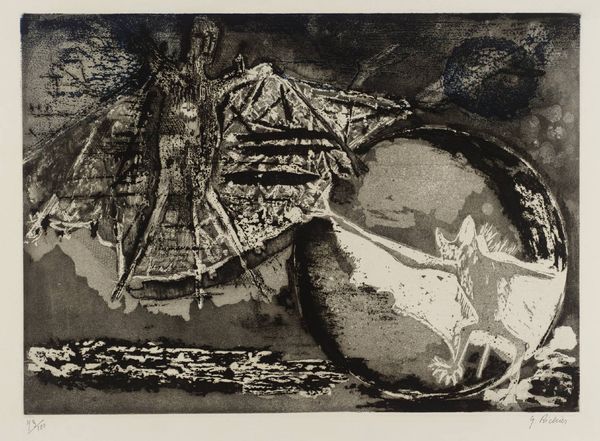
print, etching
# print
#
etching
#
etching
#
art-informel
#
abstraction
#
cityscape
Dimensions: image: 52.39 × 41.59 cm (20 5/8 × 16 3/8 in.) sheet: 58.58 × 46.36 cm (23 1/16 × 18 1/4 in.)
Copyright: National Gallery of Art: CC0 1.0
Editor: This is Ru van Rossem's "Destroyed City II" from 1962, made using print and etching techniques. It has a definite unsettling atmosphere. I see two distinct elements: an angular form in the foreground and an abstracted cityscape in the background. What can you tell me about this piece? Curator: Looking at this etching through a materialist lens, I’m drawn to consider the process of its making. The stark contrasts and rough textures wouldn't be possible without the intense labor that etching demands, suggesting perhaps the destructive processes humanity unleashes on its own environment. Do you see the relationship between that labor and the depicted ruin? Editor: I do now, the marks are aggressive! Almost as if the plate itself was assaulted. It is very thought provoking. The printmaking medium feels intrinsically tied to mass production too. Was he perhaps commenting on the relationship between industrial growth and urban decay? Curator: Exactly! The choice of printmaking democratizes this image of devastation. It's no longer a singular, precious object, but a statement accessible to a wider audience, raising questions about the societal consequences of progress and its impact on urban life for those who make progress possible. Considering it was made in 1962, what real-world devastations could have been influencing van Rossem? Editor: Thinking of the early 60s, anxieties around nuclear war were very high. Or, perhaps it's a more general reflection on the scars of the Second World War that had only recently ended? The etching’s process is violent, mirroring real destructive forces… Curator: Precisely. And by using these reproducible techniques, he’s amplifying a critical perspective on how material choices and methods can embody potent social commentary on themes of conflict and change. Editor: So the art becomes both an object of consumption and a criticism of it. Thanks for unpacking that with me! Curator: Indeed! By focusing on its creation, we revealed the complex relationship between art, production, and social reflection embedded in the work.
Comments
No comments
Be the first to comment and join the conversation on the ultimate creative platform.
